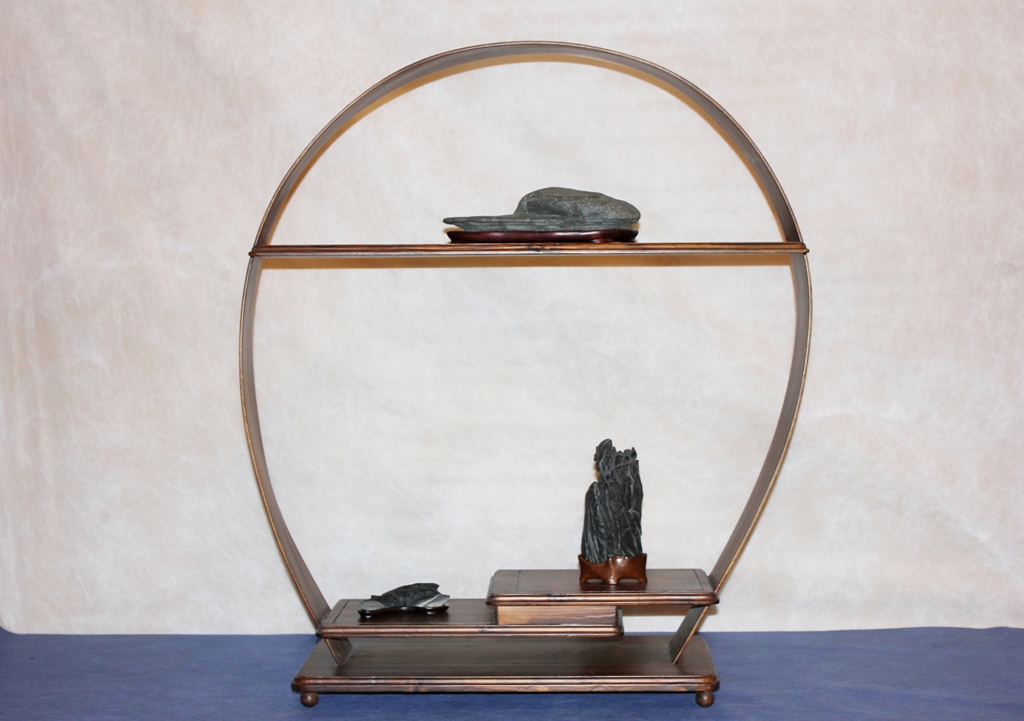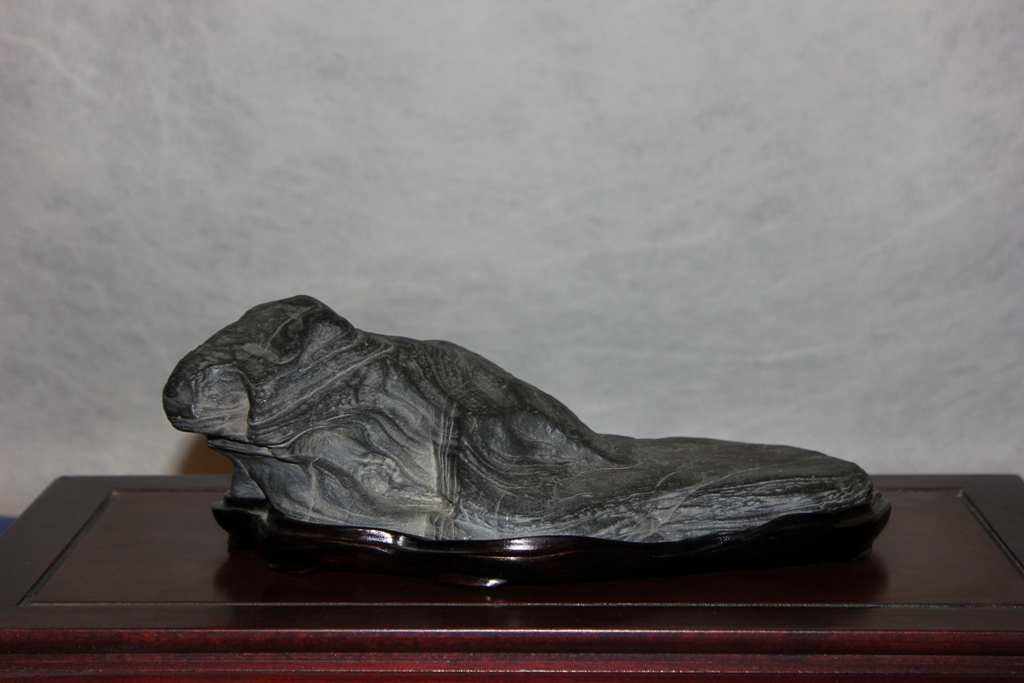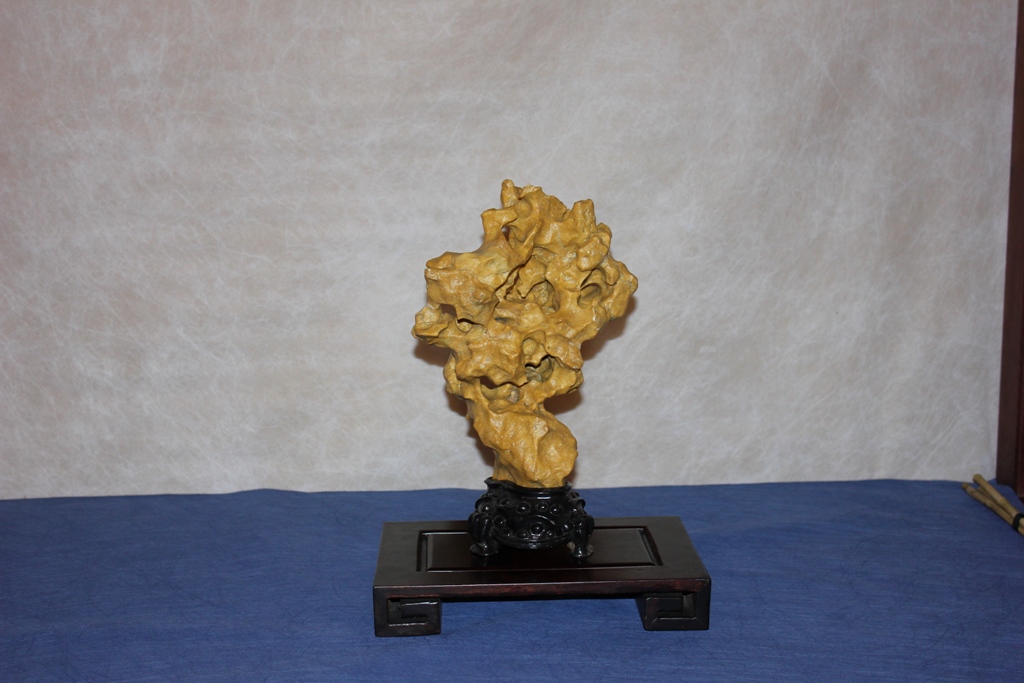by Mrs.Daniela Schifano

Gorgo al Monticano (Treviso), 5th - 6th October 2013
Miyabi is a Japanese term used in the Heian period meaning polite refinement, elegance and capacity of enjoying the pleasures of peace. In a calm, refined oasis in Treviso countryside the School of Bonsai Art locates the first edition of Miyabi Bonsai Ten, choosing not only an ancient Venetian residence, Villa Foscarini Cornaro, but also a formula that rewards without prizes.
It is reserved to Instructors and Students of the School of Bonsai Art in order to discuss and spread the learned teachings. I was invited as a special guest ... without prizes? Of course! It was an opportunity I was waiting for, proving that not just awards move people and fill exhibition halls. There is a curious analogy: the year started for me in Naples in the frescoed halls of Villa Campolieto and ends with my stay at this charming “relais” which is elegant as well as full of curious ideas. Villa Foscarini Cornaro originates as the residence of the most famous aristocrats of sixteenth-century Venice. It was restored creating an elegant, discrete hotel making the most of all environments from the barn where they bred silkworms to the Old Stables, from the cellar to the Dovecote Tower.
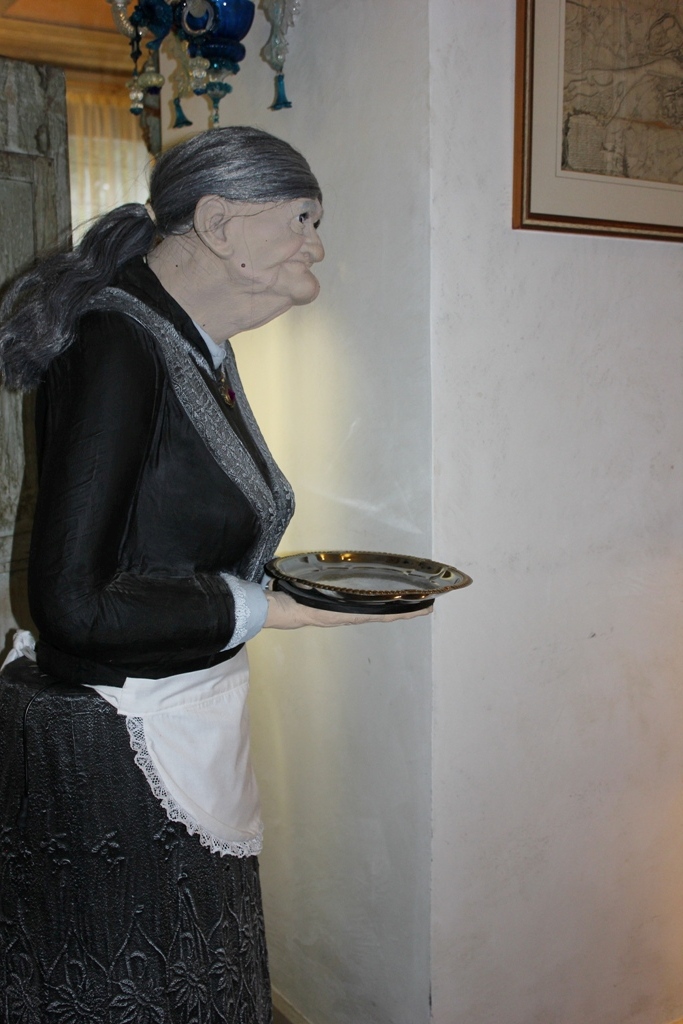 |
|
 |
| The breakfast room ... |
|
|
 |
| It looked like a huge trompe l'oeil ... on the contrary it is the Foscarini archive, a reproduction of a large library with books about whichever topic and kind, including antiques and modern collections. |
|
 |
|
The 'fake' library is outdoors in the walk where the market was located. It is luckily protected by a deep shelter.
It is possible to sit in front of it and enjoy an aperitif ... |
| |
|
|
|
|
 |
The Orangerie ... originally a small winter garden full of plants and flowers. |
 |
| |
|
|
 |
Architectures
in the green
|
 |
| |
|
|
 |
In the old cellar there is still a way of using the old bottles, while outside the light of the day is going out.
|
 |
| |
|
| An elegant and refined location, that is the ideal choice for this two-day event dedicated to bonsai, suiseki and kusamono, in a bridge which once again opens between the Venetian Republic and the mysterious East: the tea ceremony, the 'Kiu do' - the traditional archery - the sumi-e, ikebana, ceramics, the practice of Zazen, bonsai workings by Master Mr. Masashi Hirao, a student of Mr. Saburo Kato. |
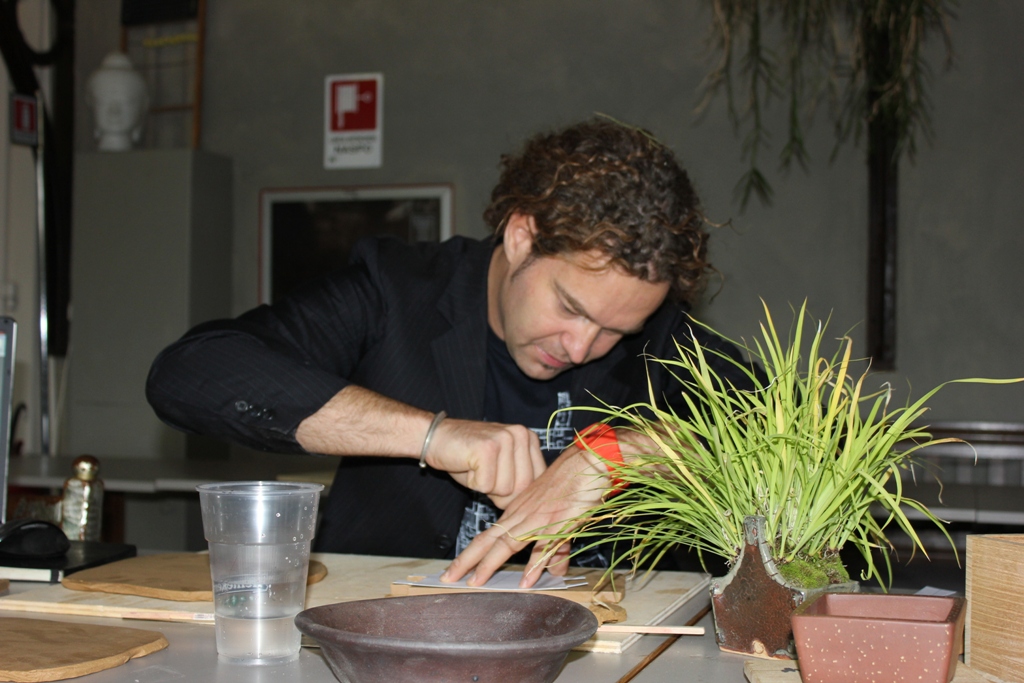 |
On the left, Mr. Igor Carino in the first stages of creating a kusamono pot
...
On the right, the participants in the workshop on sumi-e, held by Master Mr.Shoko Koike
|
 |
|
| |
| Interesting lectures like that of Mrs.Silvia Orsi on the Kusamono, that of Mr.Francesco Merlo on 'Rocks in the Japanese Garden' and the comment on the stones on display of the guest of honour Mrs. Luciana Queirolo filled our days. |
| The exhibition area was 600 square meters. There were a hundred bonsai, thirty-one suiseki and a dozen of kusamono. The organization was well-kept, with great commitment of all members of the School of Bonsai Art, who never left the exhibitors alone. I was highly impressed by the collaboration in the mounting, looking for the best general harmony. Great attention was also paid to the question of 'security', in order to protect each item on display. The mounting was in hirakazari style, with very large spaces for each single plant, both in length and in depth. In addition, exhibitions were anonymous: for bonsai were reported style and botanical species on display, for suiseki only the poetic name when it was signalled by the exhibitor. |
|
|
| |
 |
|
The suiseki were expertly alternating with kusamono, compositions of manifold herbaceous species that are not displayed in exhibitions. |
|
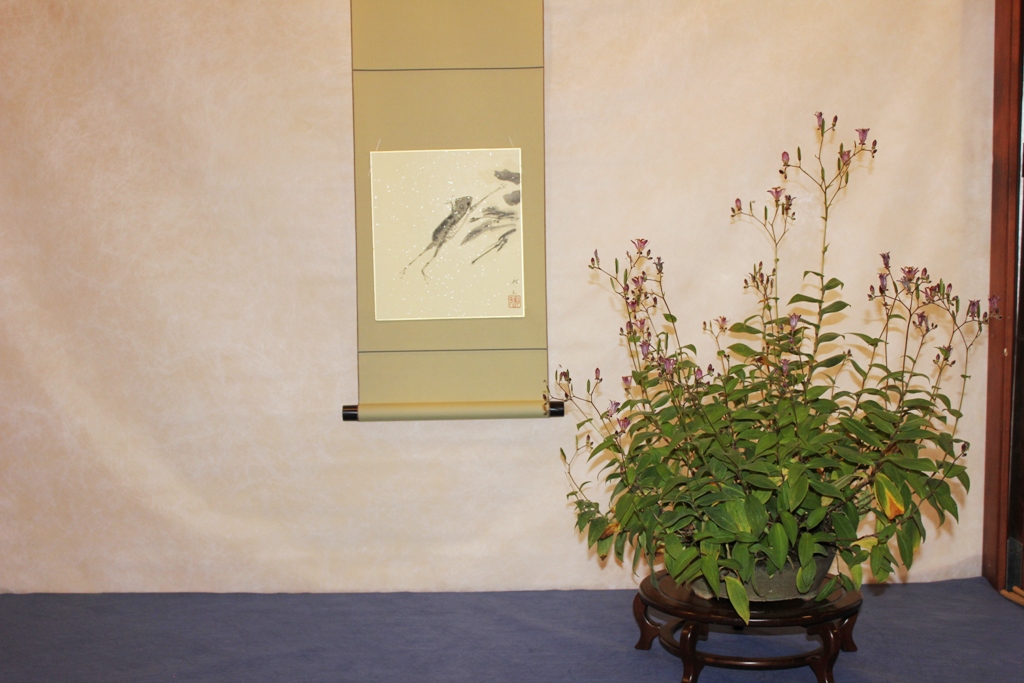 |
| A kusamono by Mr. Igor Carino |
|
|
|
A kusamono by Mr. Edoardo Rossi |
|
The strictly anonymous suiseki on display were presented by the instructors and students of the School of Bonsai Art and by the guests Mrs. Luciana Queirolo, Mr. Angel Attinà and me. From a certain point of view, I am sorry I cannot report the names of the exhibitors, because I cannot give proper credit to those who participated with great enthusiasm. Not always the stones were on display with accompanying elements, so I did not photograph the display in all cases.
Despite anonymity, I spend two words on the stone which I exhibited for the first time, a pool stone or Kibune-Kamogawa-ishi, more than anything else to explain didactically the exhibition as a whole. |
 |
Displayed on a tray and on a simple jiita to help people better appreciate the cavity of the pool, I matched a Kakejiku where a bird is hovering over the water, to drink or to play, in the shade of the branches of a pine tree. Well, the bird is a great tit and the pine is its natural environment.
Even knowing that the great tit is a symbol of autumn, I turned for confirmation to Mr. Antonio Acampora, the honorary president of Napoli Bonsai Club, who added: "About the great tit (Parus majior) it is a bird that evokes autumn in Japan since it has a golden yellow chest while in Europe it is more green.
In Japanese, "tit" is said shijuukara (pronounced scigiuucara.) the ideograms have the following meaning: SHI = 4 四, 十 juu = 10 = 雀 KARA family of Paridi. Yet the true origin of the name comes from a Japanese phrase that says "it moves frantically continually" and that 'continually' is said Shiju. The ideograms were later replaced with Shiju = 40 meaning that the great tit has the value of 40 sparrows! "
|
|
| I believe that nothing is ever enough to practice these arts with awareness. "As Mr. Susumu Sudo says: the display requires study but the method is never the goal: quality and craftsmanship are. The purpose both of Bonsai and Suiseki is this, taste and elegance." These are Antonio’s words still relating to that concept of elegance with which I began this article and which permeated the entire event. |
| I thank all the members of the Bonsai Art School for the opportunity of sharing this experience, for their efforts, for the warm welcome. A special thank to Mr.Igor Carino, who invited me, and to Mr. Andreas Geremia who has a sincere passion for stones. I hope to see him soon in the great AIAS family. Finally I also thank the Japanese painter Mrs. Shoko Okumura, who made for me Kakejiku "Matsu ni Shijuukara" ('The Pine and Great Tit'), Mr. Antonio Acampora, for his valuable advice, and Mr. Claudio Nuti, a friend who generously allowed me to use a bronze doban, one of his objects of great charm. |
| |
| The suiseki on display |
| |
 |
|
 |
| "Space" |
|
"Where you count the stars" |
|
|
|
|
|
| |
|
|
| |
|
|
| |
 |
|
 |
| "The Depth of the sea" |
|
|
|
|
|
| |
 |
|
 |
| |
|
"In the mountains with friends trying to understand" |
|
|
|
|
|
| |
 |
|
 |
| |
|
"Geisha" |
|
|
|
|
|
| |
|
|
| |
 |
|
 |
| "Indian summer" |
|
|
|
|
|
| |
|
|
| |
|
|
| |
 |
|
 |
| "Cliff" |
|
|
|
|
|
| |
 |
|
 |
| "Plateau" |
|
|
|
|
|
| |
 |
|
 |
| "Hill" |
|
|
|
|
|
| |
 |
|
 |
| "The Life" |
|
|
|
|
|
| |
 |
|
 |
| "The neverland island" |
|
"Island" |
|
|
|
|
|
| |
|
|
| |
|
|
| |
 |
|
 |
| |
|
"Devoted to Carlo" |
|
|
|
|
|
| |
|
|
| |
|
|
| |
 |
|
 |
"The autumn Sun touches the heart"
|
|
"The above of the White Tiger"
The exit Tokonoma |
|
|
|
|
|
| |
| |























